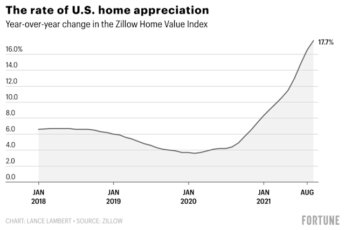YouGov has released its ‘State of the States’ report and asked people about New Jersey. Read on for some interesting facts about the state. New Jersey has always been known as one of the most conservative states, but that hasn’t stopped many Americans from liking it. So, how do the results compare with the state’s other neighboring states? Below are the results. This survey was done in early November, and the results were released this week.
YouGov compiled a ‘State of the States’
A new poll conducted by YouGov reveals that New Jersey has the highest property taxes in the nation. The results of the survey show that people in New Jersey are self-aware and don’t like to share their feelings with others. According to the survey, New Jersey residents are also incredibly unlucky. New Jersey residents also like to be alone. To see how each state ranked in the survey, click here.
YouGov’s survey of Americans
According to YouGov’s survey of Americans, New Jersey ranks 48th worst out of 50 states. The survey asked 1,211 adults to rank states according to their «win percentage» — how often they won a head-to-head matchup. New Jersey came in just above Mississippi, while Alabama, Delaware, and Kentucky ranked higher. In addition, people in New Jersey are unlucky.
YouGov is a British internet-based market-research firm with operations in Europe, the Middle East, and Asia-Pacific. In 2007, YouGov acquired US market research firm Polimetrix and Australian market research company Galaxy Research. The firm specializes in online methods, drawing demographically representative samples from a panel of over eight million people worldwide. As a result, its sample size is smaller than that of many face-to-face surveys.
The survey also asks respondents to describe their civic engagement. Some common civic engagement activities include volunteering on political campaigns, attending public meetings, making online comments, and contacting elected officials. Only 15 percent of respondents report participating in a community service organization. In contrast, the highest level of civic engagement is among U.S.-born citizens, foreign-born citizens, and non-citizens.
The results of the YouGov/Yahoo News poll suggest that Americans are losing faith in our democratic system. While many Americans aren’t interested in real-life efforts to undermine democracy, they do seem to have lost confidence in one another. But if Americans truly feel this way, they haven’t given up on democracy. And it’s clear that it’s not because of lack of money.
The bill’s opponents argue that it will raise the cost of living in the state. More than half of Americans say it will increase inflation. In addition, a majority of Americans believe it will lead to higher taxes for middle class families, while only 21 percent say it won’t affect them. And more than half of rural and suburban individuals think the bill will increase inflation. These numbers are particularly shocking given the fact that Americans are more hesitant to pay more for higher living standards than those who live in urban areas.
While secession is a controversial issue, they aren’t alone. According to YouGov’s survey of Americans, a high percentage of respondents would be willing to secede from the United States if the state lacked certain amenities, such as health care, education, or affordable housing. But the effects of such a proposal are statistically insignificant at the 0.05 significance level.
YouGov’s survey of New Jersey
A recent YouGov survey of what Americans think about New Jersey revealed that 45% of respondents feel that people in the state prioritize friendship over family. Those who live in New Jersey are particularly likely to say that they value their friends more than their family. The results of the YouGov survey are based on a panel of 1.8 million residents. You can view the full poll results and state rankings here.
Despite the positive news for the state, Americans are still wary of the Garden State. While only thirty percent of Americans view New Jersey favorably, forty percent are unfavorable. This net unfavorability rating puts New Jersey at -10 percent. The state is ranked second in overall favorability among Americans, with 39% of respondents citing their state’s positive attributes and 37% saying their state is unfavorable. In the survey, Alabama and Mississippi are the least liked states.
In 2017, the city of New York was home to an unprecedented number of people — 8.6 million. This increase was not only due to the influx of tourists, but also to the growth of other parts of the city. The most dramatic increase came in Brooklyn, which added 144,071 people to its total population in the last decade — making it the largest growth area in New York State. Despite the high population growth, the city is crowded and has limited space for housing.
Port of New York
The Port of New York is one of the largest seaports in the United States. Its location, size and infrastructure make it an important port. By the late 19th century, the city’s waterfront handled more goods than any other port in the United States combined. The city’s location also made it a hub for international trade, and it served as a major immigration gateway. It was once the world’s fifth largest seaport, and by the early 20th century, the city was the busiest.
The Port of New York is home to the United States’ largest airports, including John F. Kennedy International Airport (JFK), Newark Liberty International Airport (EWR), La Guardia Airport (Flushing), and Teterboro Airport. Several public universities are located in New York City, including the publicly-run City University of New York, with campuses in all five boroughs. The city is also home to many other institutions of higher learning, including Columbia University, Fordham University, Manhattan College, and The New School.
The Port of New York is situated in the heart of New England. The city is surrounded by several rivers, including the Hudson, which flows from the Hudson Valley to the New York Bay. The Hudson River separates New Jersey and Manhattan, and the East River extends from Long Island Sound to the New York Bay. The Bronx is surrounded by Brooklyn and Staten Island, while the Lower New York Bay opens up to the Atlantic Ocean.
The Port of New York has a high population. The city is home to a huge concentration of immigrants. In fact, it has more immigrants than any other city in the U.S., except Los Angeles. The city’s infrastructure has been so overloaded that it can’t afford all of its services. As a result, its citizens elected Mayor Robert Wagner, who began a series of major housing programs and granted city unions the right to collectively bargain. He broke with Tammany Hall, which had twice elected Wagner to city.
Because of its location, the Port of New York has a large population. The city’s population growth is disproportionate to its size, with the majority of its residents living in New York City. In contrast, the population of downstate New Jersey has been declining since the 1950s, with only 20% of residents living in the city. In the 1990s, the city’s population had become out-of-shape.
Jewish presence in New York City
In a recent study, the Jewish presence in New York City was determined by dividing the city into eight sections, including the Lower East Side, Central East Side, West End, Yorkville, and Harlem. The results indicated that, in the year 1925, there were 499,500 Jews living in Manhattan. In terms of size, the most populated areas had approximately the same percentage of Jews as in 1916, but the numbers in these sections decreased.
A large number of Jews from Russia and Eastern Europe settled in the inner cities, transforming their community and its neighborhoods. The Jewish presence in New York City was also enlarged due to a large influx of these immigrants, including the founding of the Hebrew Immigrant Aid Society in 1884 to assist these newcomers. Yiddish-speaking Jews worked in the clothing industry and peddled in small retail establishments.
In 2002, there were 972,000 Ashkenazi Jews living in New York City, accounting for about 12% of the city’s total population. It is home to the world headquarters of Bobover and Satmar Hasidism, as well as several other Haredi branches of Judaism. However, three-quarters of New York’s Jews did not consider themselves religious, despite their large number. The proportion of Orthodox Jews in the city has increased four-fold in the last 30 years, and is expected to continue to increase.
Anti-Semitism increased in New York City as East European Jews began to immigrate. Anti-Semitism laws were implemented and leading Jewish families were barred from posh resorts such as Saratoga Springs. In the 1870s, the Jewish Theological Seminary, founded in New York City, emerged as the traditional alternative to the newly-founded Hebrew Union College, founded in Cincinnati in 1875. In 1902, Jewish Theological Seminary was reorganized with the help of German Jewish elites and became the fountainhead of the conservative movement in American Judaism. The seminary spawned the United Synagogue of America.
The Jewish population in New York City has historically been Democratic, with nearly all Jews registered as Democrats. The city hasn’t had a competitive presidential primary election since 1988, and although many local elections are competitive in the Democratic primaries, the winner is almost assured a victory in the general election. Nonetheless, even those Jews who registered as Republicans would not be able to vote meaningfully in elections. While there are only three Republicans on the City Council and two Republicans in the State Assembly and Senate, it is clear that the Jewish population is highly partisan and Democratic.
Diversity of immigrants in New York City
Historically, New York City has been an important port of entry for immigrants. The city’s linguistic diversity is reflected in the 800 languages spoken in its various boroughs. English is the most widely spoken language in New York, but nearly one-fourth of residents do not speak it fluently. In fact, nearly one-third of the city’s residents have at least one immigrant parent. Overall, immigrants make up about 23 percent of the population.
The city is home to a large Jewish community. The city is the largest Jewish population outside of Israel. There are approximately 100,000 Sephardic Jews in New York City. New York is the home of the world headquarters of the Jewish group Chabad-Lubavitch. The Jewish population of New York City rose to almost two million in the 1950s. However, in recent years, the number of Jews in the city has declined, partly due to low fertility rates and immigration to other states.
The mayor’s office, however, urged residents to vote regardless of their immigration status. This would mean that non-citizens can vote in local elections. This would give them significant leverage in elective positions. But the issue remains controversial. While most immigrants are Democrat, more than a third of Chinese voters do not declare their party preference. As a result, the Chinese-American Planning Council has advocated that more immigrants participate in political life, especially since it may lead to increased public funding for English classes.
The number of immigrants living in the city is also growing. The state’s population is nearly 50 percent non-Hispanic white, and 2.2 percent non-Hispanic black. Another nine percent are Hispanic and Asian, while Native Americans make up less than one percent of the population. While upstate New York City has a high percentage of non-Hispanic white residents, downstate New York is significantly more diverse.
While there are still a number of issues that need to be addressed, some are already making a difference. For example, the city’s first South Asian woman Assembly member, Jenifer Rajkumar, is working to make domestic workers’ rights more equitable. Another issue she is pushing is making Diwali a public holiday. The city has a long list of immigrant-related issues, but there’s a clear sense of mission in addressing the challenges facing the immigrants.
Housing shortage in New York City
A half-day conference is planned for May 13 on New York City’s housing shortage. The conference is co-sponsored by AIA New York and the Center for Architecture. The city was already facing shortages and unaffordability of housing before the flu pandemic hit. The city saw an increase in the number of homeless people living in shelters by 59 percent between 2009 and 2019. As a result, housing prices are back up to pre-pandemic levels and evictions are rising.
Rents in New York City rose in the first half of this year, indicating stronger demand. While rents did not rise as much during the flu pandemic, they still remain higher than they were in June 2017. Retention rates also indicate higher demand for rental units. In the second quarter of 2022, two-thirds of expiring resident leases were renewed, compared to fewer than 50 percent during the pandemic. However, this increase was partially offset by tightening of rent stabilization laws in 2019.
Rents rose faster than in any other large city. In addition to steep population growth, restrictive development policies have also contributed to high market rents. This crisis has led the mayor to propose a citywide housing plan, but his efforts will likely face resistance from wealthy antidevelopment activists. However, it is important to note that the housing crisis in New York City has been a concern since the beginning of the housing pandemic. If the city has to meet its housing goals, it must do so by creating more affordable housing.
To help address the housing shortage in New York City, the city will create two new programs. The Neighborhood Construction Program and the New Infill Homeownership Opportunities Program will work to develop vacant land. They will create one-to-four-family homeownership opportunities and 20-unit rental buildings. The latter will pilot a mixed-income housing program. This program is designed to ensure that low-income residents can find homes that meet their housing needs.







